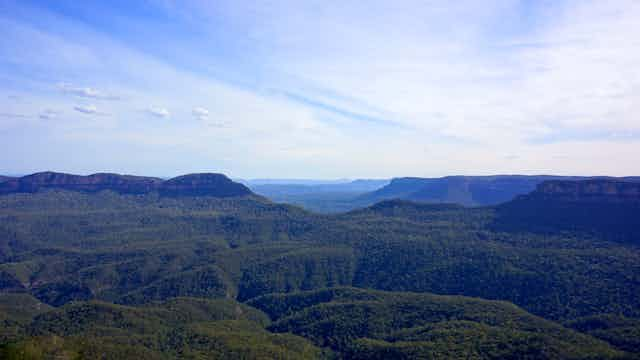This is part of our Reimagining New South Wales (NSW) series. For this series, vice-chancellors in NSW asked a select group of early and mid-career researchers to envisage new ways to tackle old problems and identify emerging opportunities across the state.
NSW finds itself contemplating life after the mining boom.
It’s a moment of significant challenge but also an opportunity to reflect on the environmental impact of the industry at the heart of Australia’s recent economic growth – and how we can change our relationship with the land for the better.
We envisage a NSW where necessary industrial innovation is coordinated in ways that are environmentally sustainable and socially just. Critical here will be the state’s capacity to drive knowledge-led and low-carbon innovation.
But we also need to rethink the way humans relate to the environment.
The legacies of past mining enterprises and the impacts of mining waste will likely be felt for many years to come. The NSW landscape is now pockmarked by the environmental traces of the mining boom. Its social and economic effects in local communities live on – and that’s before we even get to the broader global impacts of the carbon emission from coal mines.
What values might guide our future relationship with the NSW environment?
Beyond ‘wilderness’
Since the 1960s, environmentalism in Australia has largely focused on defending “wilderness”. Conceptualising nature as a pristine place devoid of humans has underpinned the establishment of many protected areas in NSW and around the world.
While this worldview is being challenged in academia, the notion that we’ve done our bit to protect the environment and biodiversity by declaring a protected area persists in the political realm. And too often areas are declared protected without recognition of, or agreement by, the Aboriginal custodians of the land.
However, protected areas in themselves are not stemming the destruction of biodiversity, and cutting humans out of the picture altogether is not realistic nor helpful.
It is also important to remember that the majority of protected areas are marginal or “leftover areas” that were simply too hard to farm, mine or log. So congratulating ourselves on conserving one chunk of land, while intensively farming or developing another piece of land in environmentally unsustainable ways is not only unhelpful – it’s hypocritical.
A fresh approach
Instead of clinging to an old-fashioned view of “wilderness”, we should recognise that areas used intensively by humans can support significant biodiversity. We can also improve the design of these places to allow humans to better connect with their environment.
Recent work is re-valuating cities as sites of significant biodiversity. For example, studies on bee biodiversity suggest that cities may support more pollinators than was once thought.
And there is growing interest in the possibilities of urban agriculture as a source of local food production. The greening of cities brings with it huge possibilities: increased connection with nature, mental and physical health benefits and opportunities for engagement with food production.
At the same time, a move toward more sustainable agricultural practices can produce impressive yields while providing habitat for plants and animals. Production and biodiversity need to be treated in tandem in policy-making and practice, rather than presented as a binary choice.
Urban planning agencies could help by boosting the focus on creating green spaces that allow for humans to connect with nature in urban and rural environments – prioritising parks, green spaces and food production grounds close to homes and other buildings.
We could also consider a fresh approach to environmental impact assessments. Traditionally, these are written by consultants funded by developers; in the future, we could consider funding and even peer reviewing such assessments independently.
Inclusive and creative participation
We will need fresh ways to boost public participation in planning for the way humans relate to their environment.
After Hurricane Sandy hit the US in 2012, US Department of Housing and Urban Development and the Rebuild By Design coalition in Northeast United States forged a collaboration between designers, researchers, community members, and government officials.
Through a series of design competitions, participants helped rebuild disaster-struck areas in ways that best suited their needs and relationships with local environments.
Sydney is collaborating with other global cities in building urban resilience, but more could be done to foster social inclusion and community participation – particularly Indigenous participation – in shaping our environments. We need to include people in the early design stages of urban planning, rather than just asking for feedback on preconceived proposals.
It won’t always be easy, but we envisage a future NSW where community participation is regarded as a vital asset rather than a problem to be overcome.
Further reading:
Reimagining NSW: how the care economy could help unclog our cities
Reimagining NSW: four ways to boost community well-being and why it matters
Reimagining NSW: how good governance strengthens democracy
Reimagining NSW: Five ways to future-proof NSW’s innovation ecosystem
Reimagining NSW: how a happy, healthy regional and rural citizenry helps us all
Reimagining NSW: tackling education inequality with early intervention and better research

